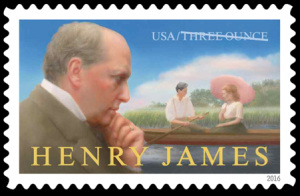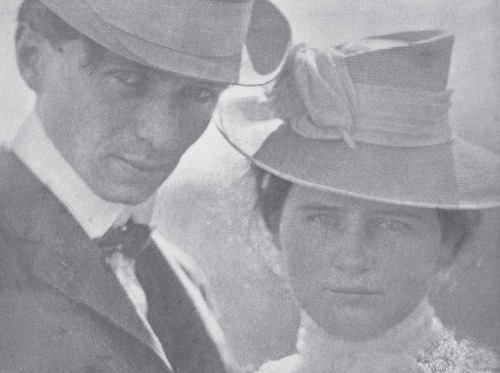At the end of March this year, the USPS made an announcement about a forthcoming stamp featuring American author Henry James (1843–1916). What you might not know is that the USPS hired me to consult on the accuracy of the fashion depicted on the stamp.

The stamp features a profile of the author in later life in the foreground, with a scene from his The Ambassadors (1903) in the background. It was the depiction of the two characters in a canoe that were of concern, so I focused my efforts on boating attire in and around 1903 (as the author did not provide very detailed description of their clothing). (Fascinating side note, Boston outlawed kissing in canoes in 1903)
Society in general was much more formal at this time. From what I understand of the female character, ironically named Madame de Vionnet, she was beautiful and somewhat refined.
She would have more likely been wearing a hat – a straw boater or a picture hat (especially as James included a mention of a hat). She would have been wearing wrist-length puffed sleeves, had a defined/corseted waist, and a pigeon or bloused top (yes, much more formal, even for a ride in a boat). She may have been dressed in all white, or she may have had on a dark skirt with a white blouse (aka shirt and waist). Her blouse would more than likely have been high-necked.

The man’s attire would also have been more formal – with a stiffened arrow collar and bow-tie, and with the addition of hat. This image of photographer Edward Steichen on his honeymoon in 1903 suggests the style I mean:
Unfortunately, I was contacted to review the stamp fairly late in the process, and so despite the information I provided, no alterations were made to the stamp (pictured below). Nonetheless, it was still an interesting excuse for research and learning more about the connection(s) between fashion and literature. (For those who want more, there is Henry James and the Art of Dress)


